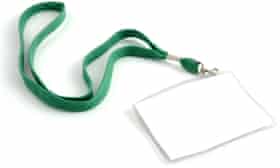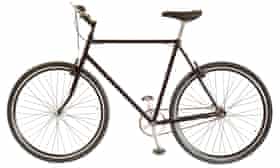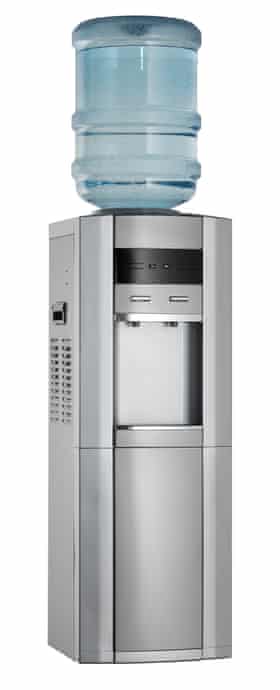Table of Contents
For anyone in charge of a school-age child, this is “school supplies” season: queueing in the only shop that sells your scratchy uniform, picking a pencil case, the narky crush in Clarks. (If you think that’s stressful, try living in Belgium, where school supplies demands are as esoteric and difficult to parse as the Voynich manuscript). All that preparation – the sharpening of crayons, ironing of name tags and ticking of lists – gives a welcome focus for the galloping anxiety the new academic year often awakens. Because September is the real high-stakes “new year, new you” and this time round, it’s not just for kids. Many companies are taking advantage of the new school year to encourage – or a more muscular verb – workers back in-person, not on-screen. Those of us who worked remotely are the lucky ones, but from doctors to delivery riders, a huge swathe of the workforce did not have the luxury of elastic waistbands and a safe, cosy home office. Now we’re anxious. We haven’t seen our colleagues unpixellated for 18 months and these were not, if I can generalise, our finest months. We grieved, feared and vegetated; we got addicted to Bourbons, or videos of cats sneezing. Our working routines became, hmm, idiosyncratic – the third breakfast, the 2pm nap, the 4am primal scream – and we forgot what “business casual” means, or whether it’s a good thing. As with school, getting back to the office going back might mean boredom, bullies and the grey, alienating drag of doing what you’re told all day. But like school, it might also be a chance for reinvention: who are we now? Perhaps we’re actually wiser, kinder, better. Failing that, there’s the consolation prize of a functioning printer. So write your adult supplies list – blister plasters, emergency biscuit, stain remover, paper bag to breathe into if it gets too much – and look out your lanyard: the office is back. Emma Beddington
The sandwich lunch
Jay Rayner

One of the joys of the past 18 months of working from home was the chance, every single day, to swing open the fridge and come up with new, dynamic and exciting ideas for lunch. SAID ABSOLUTELY NO ONE, EVER. If anything came to signify the drudge of lockdown life it was standing flat-footed in front of the cold, white cupboard, staring at the miserable same old same old. It was tiresome when you just had to feed yourself lunch; worse still, if you had a house full who also needed feeding.
This misery can be backed up by the numbers. In the early days of the first lockdown, there was much talk of panic buying as shelves emptied. Very little of it was panic buying. Pre-Covid, 30% of calories were consumed outside the house when we did normal things like go to work or school and needed lunch. Sourcing those calories from your local branch of Tesco or Sainsbury’s meant they had to increase their stock by over 40%. No wonder the food supply chain creaked at times.
So, hooray and huzzah for the return of the office lunch. In the before times, when we didn’t know how good we had it, many of us took a certain misanthropic pleasure in rolling our eyes at the soul-destroying thought of a chicken, avocado and basil sandwich or a chicken Caesar and bacon baguette. Oh God, not another Japanese sushi salad from Itsu. Lord protect us from a Brazilian black bean box from sodding Leon.
Get real, people. Oh, for the joy of standing in front of a well-polished, fatly stocked chiller cabinet stuffed with deep-filled, boxed and wrapped sandwiches. Made by somebody else. Oh, for the utter heart-lifting delight of a lunchtime in which the greatest challenge is whether to reach out with your left hand or your right hand. And then there is the sweet pleasure of taking your purchase back to your desk and eating it without having to stare around your own kitchen at all the tidying you haven’t done.
Rest assured, there will come a time when once again we can whinge about the cynical commercialism of the companies that shrink wrap this stuff for us. We can groan at the opportunism of the new product-development teams suddenly slathering everything in gochujang because Korea is so in. But for now, give yourself to it. Accept the uncomplicated joys of the pre-packaged sandwich. It’s the definition of civilisation. And we could all do with a bit of that.
Do I have to wear a bra again?
Eva Wiseman

When the country went into lockdown, my tits were finally free. It took me a minute of course, to accept the new reality. The reality where I needn’t care about my appearance because only family members would see me, people who had already witnessed me at my screaming worst or in recent memory been pushed from my vagina. A neatly structured torso seemed suddenly a bit precious.
This was a reality where bewilderment was promoted and underwear furloughed. Decades of bondage, bras with underwires that tortured the softest centimetres of my body slowly across an upright lunch, straps that bit down on my shoulders like they were in labour, gone in an afternoon. Sure, the pleasing peak achieved after many years of casual obsession with creating a vintage curve using modern lingerie was lost, too, the line of my T-shirt now a confusing landscape of hillock and moor, but the comfort! The swing!
I wasn’t alone. Across the country, breasts crept disbelievingly from the armpits they’d been nestling in. “Could it be,” they whispered thickly, possibly through the nipple, “emancipation?” As we return to the old world, where these poor glands must once again be lashed down as if inmates of a ye olde asylum, it’s exciting to see what compromises will be made. It’s clear to see, from the new trend for underboob swimwear and “curtain reveal tops” (shirts pinned loosely at nipple-height, breasts un-braed and free to chat) that the new tit reality must meet us somewhere in the middle, a no man’s land of Lycra and flesh. Those genies are not going back in their bottles without a fight.
Coping with other people
Philippa Perry

Some of us may have missed the delights of office politics from “Who nicked my mug?” to “They’re elbowing me out of the decision making.” And others may have sighed with relief that they could actually get on with some work at home without having to be nice to Kate in accounts (apologies to anyone called Kate who does work in accounts). But whether we prefer our own company or have missed the comradery, all of us will be out of practice with how to be together. Being sociable is like a muscle – if you don’t use it, it can atrophy. So being slightly less confident that you’ve said the right thing is normal. As will be feeling more tired because being together will be less automatic than it was until we all get used to it again.
Pandemics are stressful and people will have coped with the stress in different ways and for a while our coping strategies may even seem to alter our personalities. The stoical among us may have further locked down their emotion, and possibly their sensitivity with it, to a deeper basement level. And the more passionate among us might have even more difficulty than usual containing their emotions, so we’ll need to bear this in mind and exercise patience and understanding, so we can all continue to work together. We’ll need to appreciate re-entry is difficult because we are all like planets who have got used to spinning at different speeds. But even so we can become a team again. In many cases working from the office is worth persevering with because we’ll have people on hand to help when we’re stuck, better ideas will come forth from informal spontaneous unplanned water-cooler moments, and the best thing – seeing people every day who ease the loneliness of living that we don’t have to get our diaries out for.
And if it all gets a bit much, pretend you’ve taken up smoking and take some deep breaths by the fire escape for a couple of minutes.
The hot desker
Rhik Samadder

I feel jealous of anyone returning to work this week: I want to have lunch with someone that isn’t me. I’ve done every job in an office, except anything well paid. I’ve been a cleaner, receptionist, switchboard operator, and (when I arrived at the Observer) a hotdesker. My role was to cover sick or holidaying administrators, so their desk wasn’t overwhelmed by the absence. The novelty of my presence, in fact, created a lot of extra work, with senior editors having to explain where the toilets and pens were. I was a pain for security, too, with my constant requests for fobs and door codes. Hotdeskers are citizens of nowhere, you see, popping up on different levels like temp-worker whack-a-moles.
Hotdesking worked for me, because I don’t like productivity, social ties, or job stability. Classically, businesses do like those things. What we agree on is that the IT situation is a nightmare. On any new desk, I would spend a week waiting for that cursed department to sort out access permissions, floor authorisations, a magic potion that let me use the printer. I’d spend the second week explaining that they hadn’t worked. Then I would leave. I’d go back and forth several flights of stairs to do the above. A Camusian parable, being told your request has to be submitted via official email, when your request is to be set up on the office email.
Any returning hotdeskers, my people, remember – you are a cuckoo in the nest. Sharing a workspace is like sharing a bed, with only one-night stands. Keys. Trainers. Cycling gloves. Peeling keyboard shortcut stickers. Half-eaten protein balls – the desk detritus of a stranger is an icky thing. I was double-holstering with Dettol years before the pandemic. Hygiene isn’t the problem; it’s the dissonance of intimacy. A pad full of phone-doodles is a direct line to a person’s unconscious, which only a lover or therapist should enjoy. Your choices are to avoid touching any of it, thereby restricting your own freedom of movement, or else chuck the lot in the bin. My advice: hot desk, cold heart.
Workplace heartsink
Gaby Hinsliff

It’s more than a decade now since I last worked full-time in an office and, of course, there are things I miss. The camaraderie, the buzz, the glory that is air conditioning in a heatwave. But I don’t miss the heartsink of creeping into a darkened bedroom, to find the child I haven’t seen all day is already fast asleep. I don’t exactly pine for Southern Railways, exhausting office politics, or running to someone else’s clock.
So if you’re secretly dreading going back to a proper desk, you’re not alone. For any commuter parent who has loved the intimacy of a slower, more relaxed family life over the past 18 months, getting back on the morning train will be a wrench. For those whose childcare unravelled during lockdown, there’s the added anxiety of cobbling something back together again. And then there’s the curious mix of emotions familiar to anyone who has ever returned from maternity leave, but now no longer confined to parents – the giddy prospect of being out in the world again, versus mounting anxiety about what awaits at work. What if you’ve somehow inexplicably forgotten how to do it – or worse, they’ve moved on without you?
People aren’t switches, to be turned on and off at will. After a year in hiding from the virus, some understandably still fear rush-hour trains or packed lifts, while others may have more private or surprising reasons for avoiding office life. A few weeks ago, interviewing older women coping with extreme menopausal symptoms, I was struck by how many of them dreaded going back post-Covid – hot flushes, brain fog and various other unexpected indignities felt easier to manage in the privacy of their own homes.
But countless others have simply had a taste of living differently, and no longer want to be told it isn’t possible when the last year has proved in many companies that it is. Freedom, as they say, is one hell of a drug. Don’t be surprised if people refuse to give it up so easily.
The cycle commute
Martin Love

As well as sourdough recipes, knitting patterns and billionaires blasting into orbit, the past 18 months have been very good for bike retailers. Halfords, the country’s biggest supplier of bikes, saw its profits surge by almost £70m, while Pedro, the friendly Spaniard who runs my local bike shop, told me his sales have been up 200% – “It’s been a gold rush for me,” he says with a grin. So will there be a surge of riders commuting on their shiny new bikes? It’s certainly a good time to start. In many cities across the UK, miles of safe cycle lanes have been laid out – often to the annoyance of fuming motorists. It seems only good manners to use them. A bike also has the advantage of being a fun, sustainable, free-to-use, Covid-dodging, calorie-burner. So what’s stopping you?
The notion of battling along busy roads to arrive in the office dripping in sweat isn’t ideal. But it doesn’t have to be like that. Begin with a manageable distance and frequency. You could start by going one-way and then catching the bus home. And you could aim to do just a couple of days a week and build it up from there. Don’t choose a wet and windy day for your first ride – that will put you off for life. Plan your route before you set off. The fastest journey may not be the best. Find quiet roads and cycle-friendly paths. One of my great pleasures is finding new routes to do the same old trip. You’ll be amazed how much of your local area you don’t yet know. If there is someone at work who lives nearby and rides in, why not ask to follow them? Get your equipment sorted. Helmets aren’t legally mandatory, but you’d be crazy not to wear one. Put mudguards on your bike – a badger stripe looks ridiculous and there’s nothing worse than cycling with a wet bottom. Invest in lights and a decent lock – there’s no point in having your trusty steed stolen on day one. Believe me, bike thieves will be preparing for a bonanza. And don’t worry about your clothes. There are so many technical garments on the market, but an old pair of shorts and T-shirt will do until you get the hang of it. I always carry a few tools and a spare inner tube. You’ll be unlucky if you get a puncture but it’s good to know how to fix it. But if you live in a city you are never more than a walk from a bike shop where you can always get it repaired. Don’t feel guilty about taking it in – just think of all the money you are saving. Panniers do not look cool but they are super useful and a lot better than getting a sweaty back from your rucksack. When you get to the office check out if there are showers you can use. I tend to ride slowly and at a sub-sweat level, but you might want to freshen up if you have a big meeting.
There are only four simple rules to cycling that you really should never break: do not go through red lights; do not cycle on pavements; do not listen to music (your ears are as important as your eyes); and never hang your stinky cycling shorts on the back of your office chair. Other than that, you are good to go. – enjoy the ride!
Sam Wolfson
Office gossip

At the start of lockdown, there was a reprieve from office politics. Seeing everyone – from the coldest manager to the lowliest intern – in their personal space created an unusual sense of equality. But now the strange world of office gossip is coming back. Because office life exists at two levels: the formal, in which chains of command are observed and everyone is there for the betterment of the company. And then the other level – where your line manager will send you a 9am G-Chat saying they’re too hungover to function and your email buzzes with gossip of who snogged who at the pub. Only in the world of the office can you have a boring meeting and then return to your desk to find your inbox filled with messages from colleagues about how boring the meeting was.
There is no rulebook for negotiating this interpersonal doublethink – the way colleagues can shift into confidants and back again just as the lunch break is ending. But it is thrilling, in no other aspect of life does such a strong ambiguity around friendship exist. Maybe there are some people who don’t engage in this side of office life, for whom, if their work emails and WhatsApp groups were leaked tomorrow, there would be nothing of interest to read – just boring notes about which meeting rooms are booked up.
But for the rest of us, the return of gossip brings a thrill back to work itself. A demanding deadline, a looming appraisal, it all feels more manageable when the people you work with are more than just cat icons on a shared Google Sheets. We have proven we just about manage our jobs from the kitchen table without all the soap opera and scandal, but it’s not nearly so fun.
The WFH widow
Séamas O’Reilly

I haven’t worked in an office for three years, and quickly became feverishly addicted to working from home. Our flat in Hackney is pretty small, so I work in my son’s bedroom, which he doesn’t mind but which my wife seems to, a little. I think it was the fact my attitude to wires is “more please” and that I immediately placed two club-ready Adam speakers on plinths which, even I will admit, could probably squash our toddler into tuna-can dimensions.
My two-screen arrangement worked brilliantly when I had the house to myself. When I was minding him, I could distract him by playing drum’n’bass on the speakers and footage from cartoons on one of the screens.
All of this changed when the pandemic hit and my wife was forced to work from home, too, a situation that is now entering its 18th month. Gone are my possibly neglectful, but culturally useful, forays into jungle-music-as-parenting. Gone too are my – never constant, but always possible – avenues for daytime naps, eschewed since my wife finds it hard to consider this the essential part of my work/life balance. Our small flat felt positively roomy when it was just me thinking up funny ways to say that this thing is like this other thing, but now we circle around each other all day in various flavours of stress while splitting the combined internet speed necessary to run several video conferences at once.
From a moral point of view, I don’t want workers to have to return to the office, just to satisfy the government’s drive for productivity. I don’t care enough about the continuing profitability of Pret and Eat outlets in central London to wish that the nation’s workforce sacrifice the benefits they’ve accrued from 18 months spent taking back some of the power denied to them in the barbaric excesses of late capitalism.
The sham and trudge of office dynamics is why I left it in the first place. I guess I want my wife to be able to work from home, I just wish it wasn’t this one.
Dear Top Dog…
Genevieve Fox

We haven’t met, but you’re my boss, and I’m due to get out of my PJs and come BTTO next month. I do hope you won’t find my greeting to you over-familiar. In fact, I’m counting on you not doing so, given today’s brave new world of post-pandemic empathy and a collective understanding of the importance of human connection and touch. The gist of my petition is this: many of us would like to bring our dogs to work, dogs improve wellbeing and mental health (fact), and happy, healthy workers generate tasty profits for you (fact). Woof woof to that! To save you time, I’ve drafted a memo for you to send to HR and the bean counters. It shows how pooch power is the corporate sector’s new secret weapon. It uses all the right lingo and prioritises productivity. Anyway, here it is. Please feel free to pass it off as your own. Canine-enhanced workforce productivity (and wellbeing) seven-step plan:
1) As a forward-facing company, there are many reasons to be dog-friendly. For starters, it could save you money. In a recent study for a Pets at Work Scheme by Purina, 17% of people said they’d take a pay freeze in order to bring Spot or Lassie to work. Employees view their employer in a more positive light and work harder – for no extra cost. Do the maths! 2) Many staff would prefer bringing their dog in over yoga in the boardroom. Interacting with a dog lowers cortisol, produced by stress. That’s fewer sick days and medical insurance claims for the company. Yet more money saved. 3) The government says, get staff back to the office but reduce human contact, which isn’t easy. But let a few dogs in, the staff gravitate to them rather than to their colleagues, and you’ve got yourself a top Health & Safety Covid hack. 4) Over a quarter of adults own a dog. They talked to them in lockdown, they trust them, they don’t trust their fellow humans. Those who can’t yet manage eye contact can speak to the dog instead, another way to boost office wellbeing. 5) We should think of canines as the new robots, ie workforce-reduction solutions. Humans who like dogs are characterised by openness and playfulness (critical creativity attributes); ergo HR sniffer dogs can be deployed to recruit new staff. Kerching! 6) Sitting at a desk non-stop is bad for the workers. Getting up to give the office dog a belly scratch will improve blood flow to their brains, enhancing cognition – and the quality of their work. 7) Dogs also enhance their owners image – when a dog is in the office, they will appear more sympathetic and approachable. Meanwhile a boss posing with a pooch is social media gold. The post says: I am connected, our office is humane, it’s flexible. We’re a great culture fit for you. Come join us!
Back to work makeup
Funmi Fetto

I love the multi-faceted character of makeup. It can be frivolous and fun, but it also serves as escapism from reality, as war paint, as a defiant, kaleidoscopic piece of armour in times of trouble… Well that was my school of thought. Then lockdown hit and it all sort of fell down. The further I moved out of face to face meetings and into the virtual reality of Zoom, the less inclined I was to put on a full face. Was there any point to the time and patience necessary to nail the perfect winged eye? The energy expended in applying foundation; could that be better spent? Didn’t our mask wearing obligations make lipstick, ultimately, redundant? And who was I doing it for anyway? Putting on makeup, I realised, had become something I did on autopilot. I was glad to be liberated from it. But then, trite as it sounds, absence made my heart grow fonder. Lipstick! Blusher! Highlighter! Gloss! What joy. Somewhere along the line, I regained my appreciation for face painting. And September is a great excuse to experiment with textures, colours and looks. Sounds too exhausting? Then ease yourself back into office life by forgetting the multistep ritual of old and going minimal. All you need are groomed brows (Refy Brow Collection £40, net-a-porter.com), a natural looking mascara (Kjaer Weis Im-Possible Mascara, £30, kjaerweis.com) a foundation that goes on like skincare (Shiseido’s Synchro Skin and Chanel’s Sublimage are unsurpassed) and a lipstick you could apply with your eyes closed (M.A.C). Nothing too drastic. Seeing as you’ll be busy navigating other changes, it’s just as well.
What we’ve missed most
Diane Abbott
MP for Hackney North and Stoke Newington

I’ve not been going into parliament regularly and I don’t currently have a constituency office. Everything has been done at home. My office is in Portcullis House. Walking in every day through the front door across the lobby you’d notice things: the conversations and the body language; who was talking to – and plotting with – who. By the time you arrive at the lift, you have a sense of what’s happening. Politics is all about people: something is missing when you’re not seeing and hearing things in the flesh.
Helena Morrissey
Financier and campaigner

Besides the obvious appeal of meeting colleagues, I’m looking forward to getting dressed for the office. I set up a “career dressing for women” Instagram account a few months before the first lockdown. Out of necessity it evolved into a mix of “all-dressed-up-with-nowhere-to-go” posts. Whether we like it or not, we project an image – and other people infer so much about us from it. It’s not just appearances, we use our voice and body language to make an impact, and that’s limited on Zoom.
Andy Wilson
Director, Dropbox

The 9-5 office job is in the past and people now expect more flexibility in how they work and live. Covid gave us a unique opportunity to reimagine the office. Our new “VirtualFirst” approach means employees will primarily work remotely, offering a culture that is more about trust than presenteeism or clockwatching. Rethinking how we work together has been long overdue.
Dinah Rose QC
President, Magdalen College, Oxford

I’ve been living in the President’s lodgings in Magdalen since September last year, when I took up my position. What makes colleges special are the informal opportunities to meet, talk and collaborate: an astrophysicist, psychologist and art historian will find themselves sitting together over lunch. Research can take all different avenues, because of these serendipitous interactions. We’ve missed that serendipity, and community, a lot.











